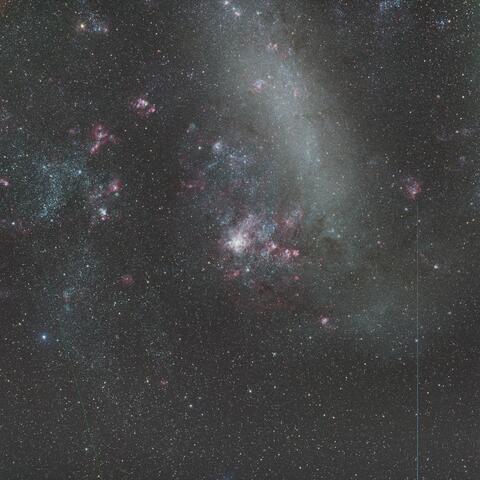What is an HII region?

You might be familiar with the different types of nebulae (Nebulae, Dark nebulae, Planetary nebulae), but let’s learn more about what happens in emission nebulae dominated by fully ionized hydrogen.
First of all, what is “fully ionized hydrogen”? Hydrogen is the first element of the periodic table, which means that a Hydrogen atom is composed of one proton in its nucleus and one orbiting electron. Ionization is a change in the charge of an atom by removing electrons, so an ionized Hydrogen region is composed of just protons and free electrons. In astronomy, it is usual to denote the neutral atom with a roman numeral I (HI), then an ion that lost one electron with II (HII), an ion that lost two electrons with III (OIII) etc. HI regions, clouds of neutral Hydrogen, do exist and observed in radio wavelengths can be used to determine properties of spiral galaxies. We are more interested in HII regions here, since they emit light in visible wavelengths, which makes them amazing targets for astrophotography.
HII regions are denser, collapsed regions in Giant Molecular Clouds and thus star-forming regions; the more massive of those new-born stars will ionize the surrounding gas. This happens as photons, light particles emitted by the stars, that have an energy superior to 13.6 electronvolt can ionize neutral hydrogen (photoionize). This limit comes from the notion that electrons can be in different energy levels, the most stable being in the ground state and the more short-lived energized states are called excited states.
In our HII region, at the same time as photoionization, the opposite process recombination occurs, where a nucleus “captures” a passion electron into an excited energy level, the electron then falls back to the ground state. This causes the emission of a photon with an energy (and thus a wavelength) corresponding to that transition. The hotter the region, the faster the free electrons will move and the faster they can encounter and be reabsorbed into a Hydrogen atom; but the faster the electron is the less likely it is to be “captured”. After some maths, this leads to a limit to the size of a photoionized region, where the number of recombinations equals the number of ionizing photos that the star emits, approximated as the “Strömgren sphere” of typically 1-100parsecs in radius.
Another interesting characteristic of HII regions is that it is relatively straightforward to measure their temperature and density. This is due to the fact that less abundant elements like Oxygen and Sulphur may also be ionized and then be recombined, however the electron will not always “cascade” down to a lower energy level from the same excited level. From the ratio of the spectral lines this causes, it is possible to infer either the temperature (usually OIII is used) or the density (usually OII or SII are used).

So, what do these slightly technical atomic physics information mean for your observation of an HII region? As previously said for emission nebulae, using a narrowband filter is a possible way to observe the nebula as this will provide some good detail of where the gas is.
You can try out the One-Click observation feature for the Tarantula nebula here or submit your own request of an HII region!
Cover image: HII Region shot in narrowband filters
Image credit:
1- The Tarantula Nebula one-click observation, Maurane Gisiger, 09/11/2020 AUS-2
